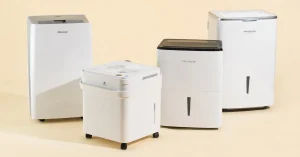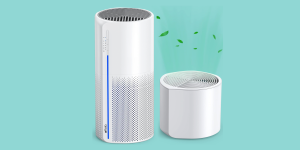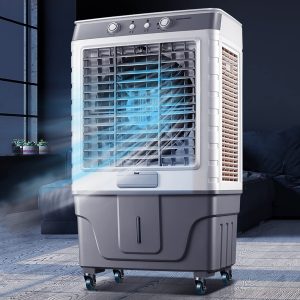Humidifiers: What Are They For? How They Work, Applications, and Safe Usage Tips

Humidifiers are commonly used devices that play a key role in maintaining optimal humidity levels in indoor environments. They are particularly useful in areas where dry air can cause discomfort or health issues. This article will delve into the function of humidifiers, how they work, where they are applied, and most importantly, how to use them safely.
1. What Are Humidifiers For? (Introduction, Common Types, and Benefits)
A humidifier is a device designed to increase the moisture level in the air, especially in environments with low humidity. Low humidity can lead to various health problems, including dry skin, irritated sinuses, and respiratory issues. Humidifiers help to prevent these issues by releasing water vapor into the air, which in turn helps to keep the airways and skin hydrated.
There are several types of humidifiers available on the market today, each suited to different needs and environments:
- Evaporative Humidifiers: These use a fan to blow air through a wet wick filter, evaporating water into the air.
- Ultrasonic Humidifiers: These use ultrasonic vibrations to create a fine mist of water vapor.
- Steam Vaporizers: These heat water to produce steam, which is then cooled and released into the air.
- Central Humidifiers: Designed to humidify an entire building or home through the HVAC system.
The main benefits of using a humidifier include:
- Improved respiratory health: Reduces symptoms of asthma, allergies, and colds.
- Prevention of dry skin: Helps avoid dry, itchy, and cracked skin.
- Better sleep: Moist air helps reduce snoring and respiratory discomfort during sleep.
- Preservation of furniture and musical instruments: Protects wood furniture and pianos from cracking due to dryness.
2. How Do Humidifiers Work? (Principles and Key Components)
Humidifiers operate on a simple principle: they increase the humidity in the air by releasing water vapor or mist. The process can differ depending on the type of humidifier, but all devices serve the same purpose of increasing moisture content in dry environments.
The key components of a typical humidifier include:
- Water Tank: Stores the water that will be used for humidification. The size of the tank determines how long the humidifier can run before needing a refill.
- Vaporizing Mechanism: This can be a fan, ultrasonic vibration, or steam system that transforms water into vapor or mist.
- Mist Outlet: The part of the humidifier that releases the vapor into the room. It can be adjustable to control the direction and intensity of the mist.
- Filters (optional): Some humidifiers come with filters to clean the water and prevent bacteria or minerals from being released into the air.
For example, in an evaporative humidifier, the water in the tank is absorbed by a wick filter. A fan then blows air through the wet filter, causing the water to evaporate into the air. In an ultrasonic humidifier, high-frequency vibrations break the water into tiny droplets that form a fine mist.
3. Where Are Humidifiers Used? (Practical Applications)
Humidifiers are highly beneficial in a wide range of settings, including:
- Homes and Apartments: In areas with cold winters, central heating systems often dry out indoor air, causing discomfort. Humidifiers help to balance the humidity and improve indoor air quality.
- Offices: Dry air in office environments can lead to dry eyes, sore throats, and fatigue. Humidifiers can create a more comfortable working atmosphere.
- Hospitals and Healthcare Settings: Humidifiers are used in patient rooms, particularly for those with respiratory conditions such as asthma, bronchitis, or the flu, to help ease breathing difficulties.
- Storage of Musical Instruments and Artifacts: Humidifiers are used to maintain stable humidity levels for the preservation of wood-based musical instruments, furniture, and delicate artifacts.
- Greenhouses: Proper humidity is essential for plant growth. Humidifiers can help regulate moisture levels in greenhouses to promote healthy plant development.
In addition to these, humidifiers can also be valuable in baby rooms, where they help create a comfortable and soothing environment for infants, particularly in dry climates or during winter.
4. How to Use a Humidifier Safely (Safe Usage Tips and Important Considerations)
While humidifiers offer many benefits, it is essential to use them properly to ensure safety and effectiveness. Here are some key safety tips:
- Clean the Humidifier Regularly: Bacteria and mold can grow in stagnant water. It is crucial to clean the tank and components of your humidifier frequently, ideally every few days or according to the manufacturer’s instructions.
- Use Clean, Filtered Water: Avoid using tap water that may contain minerals, as these can create deposits that clog the humidifier and damage the unit. Distilled or demineralized water is often recommended.
- Avoid Overhumidifying: Too much moisture can lead to condensation on walls and windows, potentially causing mold growth. Monitor humidity levels and aim to keep the room’s humidity between 30-50%.
- Change the Water Daily: Stale water can harbor bacteria, so it is important to empty the water tank every day and refill it with fresh water.
- Place the Humidifier in a Safe Location: Ensure that the humidifier is placed on a flat surface, away from electrical outlets and sensitive materials. Also, keep it out of reach of children and pets.
- Use a Hygrometer: To monitor the humidity level in your room, a hygrometer can help you avoid excessive moisture levels and maintain a comfortable environment.
By following these precautions, you can safely enjoy the benefits of a humidifier without compromising your health or the condition of your home.
Conclusion
Humidifiers are versatile devices that can significantly improve indoor air quality and enhance comfort in both home and workplace environments. By understanding how they work, their various applications, and the safety measures for proper use, you can maximize their effectiveness while ensuring they remain a beneficial addition to your space. Whether you’re looking to alleviate dry skin, reduce respiratory issues, or protect wooden furniture, a humidifier is a valuable tool in creating a healthier, more comfortable environment.







